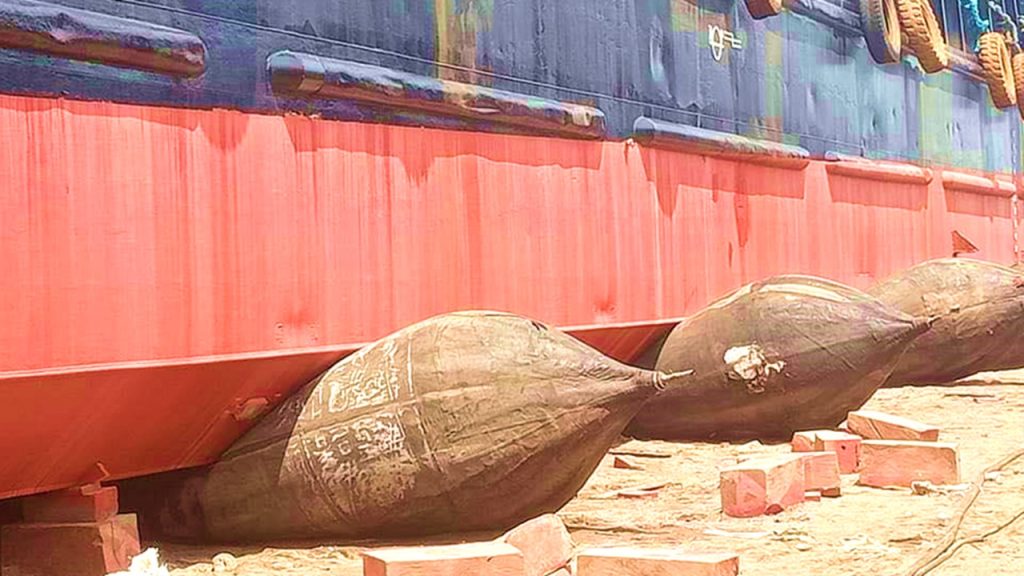When it comes to the vast world of ship maintenance and repairs, ship plumbing and piping repairs play a crucial role in ensuring the smooth operation of these maritime giants. From cargo vessels to cruise ships, proper plumbing systems are essential for sanitation, water supply, and waste management on board. For Filipinos who have been instrumental in shaping the global maritime industry, understanding ship plumbing and piping repairs is not just a professional requirement but also an opportunity to contribute their expertise to this vital aspect of seafaring life. In this ultimate guide, we will delve into the intricacies of ship plumbing systems, explore common issues that arise onboard, and provide valuable insights for Filipinos looking to master this indispensable skill set.
Click here to view our capabilities in ship plumbing and piping repairs in Tanza, Cavite, Philippines
What are Ship Plumbing and Piping Repairs?
Ship plumbing and piping repairs are crucial aspects of boat maintenance that ensure the smooth functioning of the vessel’s onboard systems. From piping leaks to drain blockages, these repairs address a wide range of issues that can arise at sea. And for Filipino seafarers, who make up a significant part of the maritime workforce worldwide, understanding ship plumbing and piping repairs is paramount in the Philippines.
One common type of repair involves fixing leaking pipes, which can lead to significant water damage if left unattended. Seafarers need to be skilled in identifying the source of the leak and using appropriate techniques to fix it. Another important task is clearing drain blockages caused by items flushed down toilets or discarded improperly into sinks or drains. Regular inspections are necessary to prevent these blockages from causing further damage or compromising on-board sanitation.
Furthermore, seafarers must also be well-versed in maintaining and repairing sewage systems aboard ships. This includes directing waste towards treatment areas for proper disposal. When various components malfunction due to wear and tear or other factors, quick action must be taken to restore functionality and avoid any interruptions in daily operations.
Ship plumbing and piping repairs in Cavite, Manila, Cebu, Subic Bay, Batangas, Navotas, and Davao play an integral role in maintaining a safe and efficient onboard environment for both crew members and passengers alike. With their expertise in this area, Filipino seafarers continue to demonstrate their essential contribution to the global maritime industry.
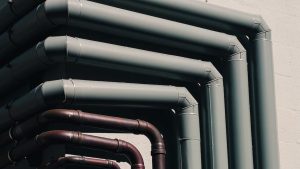
The Importance of Ship Plumbing and Piping Repairs in the Philippines
Ship plumbing and piping repairs are crucial for the smooth operation and safety of vessels in the Philippines. These repairs ensure that water systems, sewage systems, and other essential functions are working properly, preventing potential disasters at sea. For example, a leaking pipe or faulty valve can quickly escalate into a major problem, compromising the integrity of the ship’s structure and endangering the lives of crew members.
Moreover, regular maintenance and repair of ship plumbing and piping systems can help prolong the lifespan of these critical components. Saltwater corrosion is a common issue faced by ships in the Philippines due to constant exposure to harsh marine environments. By promptly addressing any damages or blockages in pipes or fittings through professional repairs, ship owners can prevent further deterioration and preserve the longevity of their vessels.
In addition to safety considerations, efficient plumbing and piping systems on ships also have significant economic implications. Properly functioning systems minimize downtime due to maintenance issues and increase operational efficiency. This not only reduces costs associated with emergency repairs but also enhances overall productivity by ensuring uninterrupted operations at sea.
Ship plumbing and piping repairs play an essential role in maintaining safety standards, prolonging vessel lifespan, and optimizing operational efficiency for ships operating in Philippine waters. Shipowners should prioritize regular inspections, timely repairs, and quality replacements when necessary to ensure seamless sailing experiences while minimizing risks for both crew members and maritime operations as a whole.
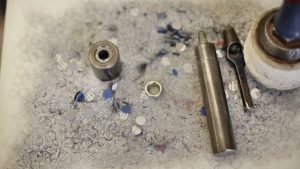
Common Plumbing and Piping Issues on Ships in the Philippines
One common plumbing issue faced on ships in the Philippines is blocked drains and pipes. The constant use of toilets, sinks, and showers can lead to a buildup of debris and waste materials, causing blockages. This not only disrupts the functioning of these fixtures but also poses a hygiene risk for the crew members on board. To prevent such blockages, regular cleaning and maintenance of drains and pipes are necessary.
Another frequent issue is leaks in pipes and fittings. The constant movement and vibrations experienced by ships can put immense pressure on the plumbing system, leading to cracks or loosening of joints over time. These leaks can cause water damage to various parts of the ship if not addressed promptly. Regular inspection of pipes and fittings, along with immediate repairs when leaks are detected, is crucial in order to maintain a well-functioning plumbing system.
It’s essential for ship owners and crew members in the Philippines to be aware of these common plumbing issues that occur on ships. By taking proactive measures such as regular maintenance and prompt repairs, they can ensure a smooth functioning plumbing system on board while minimizing any potential risks or disruptions caused by these issues.

Tools and Equipment Needed for Ship Plumbing Repairs in the Philippines
When it comes to ship plumbing repairs in the Philippines, having the right tools and equipment is essential for efficiency and effectiveness. One of the most important tools needed is a pipe cutter. This tool allows you to easily cut through pipes of different materials, such as copper or PVC, enabling you to replace damaged sections or install new ones quickly. Another crucial tool is a pipe wrench, which helps in loosening or tightening threaded fittings securely.
In addition to these basic tools, it’s also necessary to have a variety of fittings and connectors on hand. This includes things like couplers, elbows, tees, and valves. These components allow you to connect different sections of pipes together or divert water flow as needed during repairs. It’s important to invest in high-quality fittings that are durable and resistant to corrosion in order to ensure long-lasting results.
Lastly, don’t forget about safety equipment when tackling ship plumbing repairs. Protective gear such as gloves and goggles are essential for avoiding any potential hazards while working with pipes and potentially hazardous substances like adhesives or sealants. A good quality flashlight can also be handy in inspecting hard-to-reach areas or identifying small leaks. Having all these tools and equipment at your disposal will make ship plumbing repairs easier and more efficient while ensuring that your vessel remains in top shape for smooth sailing on the open seas.
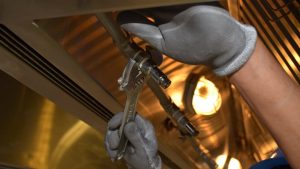
Step-by-Step Guide to Ship Plumbing and Piping Repairs in the Philippines
When it comes to ship maintenance and repairs, many Filipino marine engineers often focus on the structural aspects of the vessel, such as the hull and the engine. However, one crucial area that is often overlooked but equally important is ship plumbing and piping. These systems play a vital role in ensuring smooth operations onboard ships, carrying out tasks such as supplying fresh water, managing waste disposal, and even controlling fire hazards.
Ship plumbing and piping repairs are essential for several reasons. Firstly, regular maintenance helps prevent potential leaks or pipe bursts that could lead to significant damage to the ship’s structure or cargo. A small crack or loose connection in a pipe may seem insignificant at first glance but can quickly escalate into a severe problem if left unattended. Secondly, reliable plumbing systems are necessary for maintaining crew comfort and well-being during long voyages. Everyone on board relies on functioning toilets, showers with hot water supply, and clean drinking water – all of which can be jeopardized by faulty plumbing.
Moreover, proper pipe repair not only prevents inconveniences but also ensures safety on board ships. Adequate drainage systems help control potentially hazardous situations caused by flooded areas or slippery decks due to leaking pipes. Additionally, effective firefighting measures greatly rely on well-maintained piping arrangements for the proper distribution of extinguishing agents throughout the vessel.
While it may be easy to overlook ship plumbing and piping repairs amidst other pressing concerns related to maritime maintenance, it is crucial not to underestimate their significance.
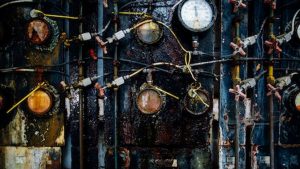
Assessing the damage: Identifying Leaks and Blockages
Assessing the damage is a crucial step in ship plumbing and piping repairs. Leaks and blockages can cause significant disruptions to a vessel’s operations, not to mention potential safety hazards. When it comes to leaks, it’s important to identify their source accurately before taking any remedial actions. Sometimes, the leak might not be easily visible, requiring a careful inspection of the plumbing system. Utilizing advanced tools such as thermal imaging cameras or acoustic detectors can help pinpoint even the smallest leaks that are invisible to the naked eye.
Blockages pose another challenge in ship plumbing repairs. They can result from various factors, such as debris buildup or corrosion within the pipes. Identifying blockages promptly is crucial for preventing further damage and ensuring smooth water flow onboard. One effective method for determining blockages is using CCTV cameras capable of maneuvering through tight spaces within pipes. These cameras provide real-time video footage of any obstructions, allowing technicians to plan an appropriate course of action based on accurate information.
Assessing leaks and blockages in ship plumbing systems requires meticulous attention to detail and the utilization of cutting-edge technology. By accurately identifying these issues at an early stage, sailors can prevent further damage and ensure the smooth operation of their vessels while at sea. Taking proactive measures not only saves time and money but also contributes to maintaining a safe environment onboard for both crew members and passengers alike.
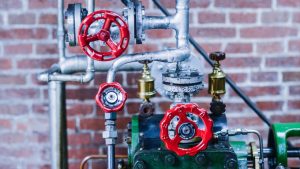
Gathering the necessary tools and materials
Gathering the necessary tools and materials is essential before you begin any ship plumbing and piping repairs. Having the right equipment not only ensures a smooth repair process but also saves time and effort. One of the first things to consider is having a reliable set of wrenches and pliers in various sizes. These tools are indispensable when it comes to loosening and tightening different types of fittings.
Additionally, it’s crucial to invest in high-quality pipes, valves, and fittings that can withstand the harsh marine environment. Opt for materials like stainless steel or brass that offer excellent corrosion resistance. It’s also important to stock up on pipe joints, connectors, adapters, and seals, as they are commonly used during repairs.
Moreover, don’t forget about safety gear such as gloves, goggles, ear protection, and masks to protect yourself from potential hazards. The quality of your work will greatly depend on having the proper tools at your disposal—so take the time to gather all necessary items before diving into ship plumbing repairs.

Step-by-Step Repair Process: Fixing Leaks and Replacing Pipes
Here are the process for repairing pipes for Filipino technicians and engineers:
Step 1: Identify the Leak
The first step in fixing a leak is to identify its source. Water leaks can be sneaky, often originating from a different location than where they are visible. To locate the source of the leak, start by examining all visible pipes for signs of moisture or corrosion. Additionally, listen for any hissing or dripping sounds that could indicate a hidden leak behind walls or under floors.
Step 2: Shut Off the Water Supply
Before attempting any repairs, it is crucial to shut off the water supply to prevent further damage and ensure your safety. Locate the main shut-off valve, which is typically located near the water meter or where the main pipe enters your home. Turn it clockwise until it stops to shut off the water supply fully.
Step 3: Repairing Leaks
Once you have identified and isolated the leak, you can begin repairing it. Depending on the type and severity of the leak, different repair methods may be necessary. Common options include using epoxy putty or pipe wraps for temporary fixes or soldering and replacing sections of damaged pipes for more permanent solutions.
By following these step-by-step instructions for fixing leaks and replacing pipes, you can tackle plumbing repairs with confidence and save money on professional services. Remember always to take safety precautions during repair work and consider consulting a professional if you encounter complex or extensive plumbing issues.

Testing and Ensuring Proper Functionality
Testing and ensuring proper functionality is a crucial step in ship plumbing and piping repairs. After conducting the necessary repairs, it is imperative to thoroughly test the system to ensure that everything is functioning as it should. This not only helps identify any potential issues but also gives confidence that the repairs have been successful.
One important aspect of testing is checking for leaks. Even a small leak can cause significant damage if left unchecked, leading to water damage or compromising the structural integrity of the ship. By conducting a thorough leak test, such as pressurizing the system and visually inspecting for any signs of leakage, one can quickly identify and address potential issues before they escalate.
Another important aspect of testing is evaluating overall system performance. This includes assessing factors like water flow rate, pressure levels, and temperature control. It’s essential to ensure these parameters meet regulatory requirements and are within acceptable limits for optimal functionality. Additionally, performing tests under various load conditions can help confirm that the system can handle different usage scenarios effectively.
Rigorous testing and evaluation are vital in maintaining proper functionality after ship plumbing and piping repairs. These tests help detect any lingering issues or deficiencies while ensuring that all repaired components are working as intended. Through comprehensive leak checks and assessing overall system performance factors like water flow rate and pressure levels, one can have peace of mind knowing that their ship’s plumbing systems are in good condition and ready for safe navigation.
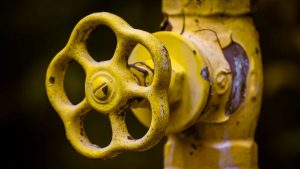
Safety Precautions for Ship Plumbing Repairs in the Philippines
When it comes to ship plumbing repairs, safety should always be a top priority. Working on a ship’s plumbing system can present unique challenges and hazards that require careful consideration. One of the most important safety precautions for ship plumbing repairs is wearing the appropriate personal protective equipment (PPE). This includes gloves, safety glasses or goggles, and steel-toed boots to protect against any potential splashes or accidents.
In addition to PPE, it is crucial to have a thorough understanding of the ship’s layout and plumbing system before attempting any repairs. Familiarize yourself with the location of shut-off valves, water lines, and sewage systems. This knowledge will help you navigate through tight spaces and avoid potential hazards such as electrical wiring or machinery. It is also essential to work in a well-ventilated area when dealing with sewage systems, as exposure to toxic gases can be harmful.
Lastly, never underestimate the importance of communication during ship plumbing repairs. Always work with a partner who can assist you if an emergency arises. Establish clear signals or codes so that you can communicate effectively, even in noisy environments. Regularly check in with each other throughout the repair process and ensure that both individuals are aware of their surroundings at all times.
By prioritizing safety precautions such as wearing appropriate PPE, familiarizing yourself with the ship’s layout, and maintaining effective communication during repairs, you can significantly reduce the risk of accidents or injuries onboard ships in the Philippines.
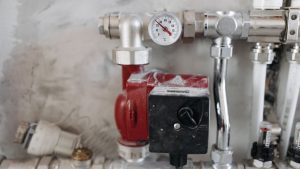
Hiring a Professional vs. DIY Ship Plumbing Repairs in the Philippines
When it comes to ship plumbing repairs in the Philippines, the decision of whether to hire a professional or attempt a DIY approach can be a difficult one. On one hand, hiring a professional plumber ensures that the job will be done correctly and efficiently, giving you peace of mind and potentially saving you time and money in the long run. Additionally, professionals have access to specialized tools and equipment that may not be readily available to the average person.
However, there are also advantages to taking on ship plumbing repairs yourself. DIY repairs can give you a sense of accomplishment and allow you to learn new skills. It can also be more cost-effective if you have some knowledge or experience in plumbing. However, it’s important to consider your own skill level before attempting any major repairs – if you’re unsure about your abilities, it may be best to leave it to the professionals.
Ultimately, the choice between hiring a professional or attempting DIY ship plumbing repairs in the Philippines comes down to your individual circumstances. Assessing your skill level, availability of resources and tools, as well as budget constraints can help guide your decision-making process. Whether you choose one option over the other, ensuring that proper maintenance is conducted regularly will go a long way in preventing larger issues from arising down the line.
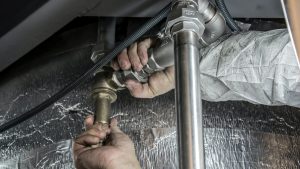
Tips for Maintaining Ship Plumbing Systems in the Philippines
Maintaining ship plumbing systems is crucial for ensuring smooth sailing and preventing any potential issues while at sea. Here are some essential tips to help Filipino sailors keep their plumbing systems in top shape. Firstly, regular inspections are key to identifying problems early on and preventing major breakdowns. Pay attention to signs of leaks, corrosion, or clogs in pipes and fittings. Secondly, proper cleaning and maintenance routines should be followed diligently. Use appropriate cleaning agents that won’t damage the pipes, and always flush with clean water after each use. Regularly check seals, gaskets, and valves for wear or damage so they can be replaced promptly if needed.
Additionally, educating crew members about water conservation is vital for sustainable sailing practices. Encourage them to practice simple habits like turning off taps tightly and fixing leaking faucets immediately to minimize water wastage on board. Moreover, it’s important to invest in high-quality plumbing equipment that will withstand the harsh conditions at sea. Purchase durable hoses, valves, fittings, and other components from reputable suppliers who understand the unique challenges faced by ships in the Philippines.
By prioritizing regular inspections, following proper cleaning routines, promoting water conservation among crew members, and investing in quality equipment from trusted suppliers – ship owners can ensure a reliable plumbing system that will withstand the test of time at sea’s unpredictable forces.
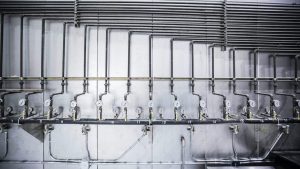
Are You Looking for a Ship Plumbing and Piping Repair Company in the Philippines?
If you’re in need of ship plumbing and piping repair services in the Philippines, look no further than Amaya Dockyard & Marine Service Inc. (ADMSI). With their commitment to quality and customer satisfaction, they have become a trusted name in the industry.
- Email us: info@amayadockyard.com
- Call our 24-hour hotline: +63 917 633 0479
- Viber: +63 917 633 0479
- WhatsApp: +63 917 633 0479
- Facebook Messenger: Click here
- Click here to inquire
One of the key factors that sets ADMSI apart is its team of highly skilled technicians who are experts in ship plumbing and piping repair. They have years of experience working on various types of vessels, from small boats to large ships. No matter the size or complexity of the project, you can trust that they will deliver excellent results.
Another advantage of choosing ADMSI is its use of advanced technologies and equipment. They utilize state-of-the-art tools to diagnose and fix any plumbing or piping issues efficiently. This ensures that repairs are done accurately and quickly, minimizing downtime for your vessel.
When it comes to ship plumbing and piping repairs, it’s crucial to choose a company that has a track record of delivering top-notch service. ADMSI offers just that. Their expertise, combined with their commitment to quality and customer satisfaction, makes them an ideal choice for all your repair needs.
Whether you require routine maintenance or extensive repairs, ADMSI has got you covered. Contact them today for reliable ship plumbing and piping repair services in the Philippines!
Takeaway: Ship Plumbing and Piping Repairs: Ultimate Guide for Filipinos
In conclusion, ship plumbing and piping repairs are crucial aspects of maintaining the functionality and safety of a vessel. For Filipinos who work in the maritime industry, having a comprehensive understanding of these repairs is essential for ensuring smooth operations at sea. From fixing leaks and blockages to replacing damaged pipes, the ability to perform these repairs effectively can save time and money while also preventing potential disasters.
However, it is important to note that ship plumbing and piping repairs require specialized knowledge and skills. As such, Filipinos interested in pursuing a career in this field should consider acquiring proper training and certification. This will not only enhance their professional credibility but also ensure that they are equipped with the necessary expertise to handle complex repair tasks efficiently.
Moreover, staying updated with the latest advancements in ship plumbing technology can give Filipino seafarers an edge in their careers. New innovations such as smart water management systems or eco-friendly pipe materials can greatly improve efficiency on board while reducing environmental impact. By staying informed about these developments, Filipinos can contribute to creating more sustainable shipping practices while excelling in their roles as skilled plumbers and pipe fitters at sea.

